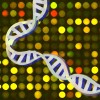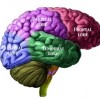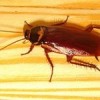Countdown to the 2009 Nobel Prizes…
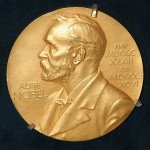 Nobel Prize week will kick-off on Monday (October 5th) with the announcement of the Prize in Physiology or Medicine. The prizes for Physics and Chemistry will follow on successive days, as the science world is treated to its annual brush with celebrity. Unlike the Oscars, however, we do not know the list of nominees and the whole election process is rather secretive. Deprived as we are of a list of formal candidates, I think it best to resort to wild speculation, conjecture, and rumor.
Nobel Prize week will kick-off on Monday (October 5th) with the announcement of the Prize in Physiology or Medicine. The prizes for Physics and Chemistry will follow on successive days, as the science world is treated to its annual brush with celebrity. Unlike the Oscars, however, we do not know the list of nominees and the whole election process is rather secretive. Deprived as we are of a list of formal candidates, I think it best to resort to wild speculation, conjecture, and rumor.
Physiology and Medicine…
The main contenders: Elizabeth Blackburn, Carol Greider, and (possibly) Jack Szostak
The discovery: Telomeres and telomerase
The verdict: Strong favorites
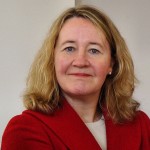
Carol Greider
Blackburn, Greider, and Szostak are well-known in biology circles for discovering telomeres and telomerase. A telomere is a region (or cap) of repetitive DNA at the end of every chromosome that basically protects the chromosome from deconstructing. Telomeres are an important element of the cell cycle – after every round of cell division, telomeres get shorter to the point where they no longer exist (and the cell is then destroyed).
Telomerase is an enzyme that works against this type of shortening – it replenishes the chromosome by adding DNA sequence repeats to telomeres regions. It is particularly important during prenatal development, where it buffers against cell-instability and aging. When we mature, telomerase “switches off” in virtually all tissues, ensuring the cell will only complete a certain number of divisions (e.g. 20-70) before dying. The switching off of telomerase is important process in cancer biology – unrestrained dividing (i.e. cell immortality) is a classic hallmark of the cancer cell.
In 2006, Blackburn, Greider, and Jack Szostak shared a Lasker award for “the prediction and discovery of telomerase”. The Laskers are the US equivalent of the Nobels, and frequently anticipate future Nobel Prize winners. As such, they have to be considered serious contenders for the gold medal.
In 1978, Blackburn and Joseph Gall, then at Yale University, published a landmark paper, identifying telomeres paper as a repetitive chain of six-nucleotide sequences that comprised the chromosomes’ end. In a number of studies in the 1980s Blackburn and Szostak confirmed that these repeats stabilize chromosomes inside of cells and also predicted the existence of the telomerase enzyme.
Blackburn moved to the University of California and recruited Carol Greider as a graduate student. In what the Lasker Foundation described as a “tour de force of biochemistry”, Greider purified the telomerase protein and demonstrated its enzymatic activity. Greider moved to Cold Spring Harbor Laboratory, where she achieved the ultimate milestone of isolating the RNA gene that encodes for the telomeric template.
Nobel Prizes can only be shared by a maximum of three people. If the award is given for the discovery of telomeres and telomerase, then Blackburn and Greider are the strongest candidates. If there is to be a third recipient, then Joseph Gall (Carnegie Institution and Johns Hopkins), who pioneered the original work with Elizabeth Blackburn, might be also be considered a contender. He did not share their Lasker award in 2006, but did win the Special Achievement Award that same year.
Blackburn, Greider, Szostak, and Gall are currently based in the University of California, San Francisco , Johns Hopkins University School of Medicine, Harvard Medical School, and the Carnegie Institution respectively.
The contenders: John Gurdon & Shinya Yamanaka
Their discovery: Nuclear reprogramming (stem cell research)
The verdict: Too soon?
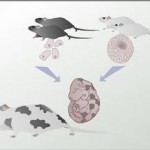
Gurdon and Yamanaka are well-known for their work on stem cells
Gurdon and Yamanaka shared the 2009 Lasker Award for Basic Medical Research for pioneering the process (nuclear reprogramming) for turning adult cells into stem cells. Gurdon rose to prominence in the 1950s observing that nuclei from adult cells, when transferred into eggs, assumed embryonic features. This discovery demonstrated that adult cells retain all their genes and can be re-programmed. In 2006, Shinya Yamanaka achieved this feat, creating pluripotent (undifferentiated) stem cells from adult fibroblasts (connective tissue cells) in mice. In 2007, his team created pluripotent stem cells from human adult fibroblasts. Nuclear reprogramming techniques have significant potential as cancer treatments and many other therapeutic fields.
With the Nobel Prizes, there is typically a significant time lag between the discovery and the award. Yamanaka is odds-on to get an award at some stage but 2009 is probably too soon.
The contenders: James Rothman & Randy Schekman
Their discovery: The mechanisms behind vesicle transport
The verdict: Good contenders
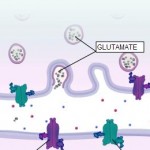
Rothman and Schekman pioneered research into vesicle transport
Again, an uncontroversial choice of two former Lasker Award winners. Rothman and Schekman won the Basic Medical Research Lasker Award in 2002 for discovering the machinery that drive vesicles, the tiny sacs that transport signaling molecules within cells. This process is critical to virtually every physiological function.
Rothman is based in Yale University. Schekman is a biologist at the University of California, Berkeley.
Physics…
Thomson Reuters recently published a list of leading contenders, based on primarily on citations. They include:
Akir Aharonov, Chapman University
Michael Berry, University of Bristol
Juan Ignacio Cirac, Max Planck Institute for Quantum Optics
Peter Zoller, University of Innsbruck
John Pendry, Imperial College of Science and Technology
Sheldon Schultz, University of California San Diego
David R. Smith, Duke University
Check back for our Physics update next week.
Chemistry…
Again, I will defer for now to Thomson Reuters. Potential winners include:
Michael Gratzel, Swiss Federal Institute of Technology
Jacqueline Barton, California Institute of Technology
Bernd Giese, University of Basel
Gary Schuster, Georgia Institute of Technology
Benjamin List, Max Planck Institute for Coal Research
Watch this space!
| Print article | This entry was posted by connolly on October 1, 2009 at 5:04 pm, and is filed under DNA From The Beginning. Follow any responses to this post through RSS 2.0. You can skip to the end and leave a response. Pinging is currently not allowed. |

